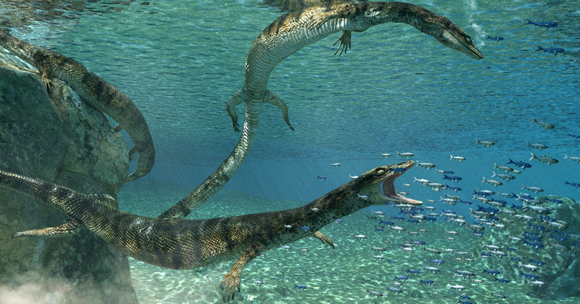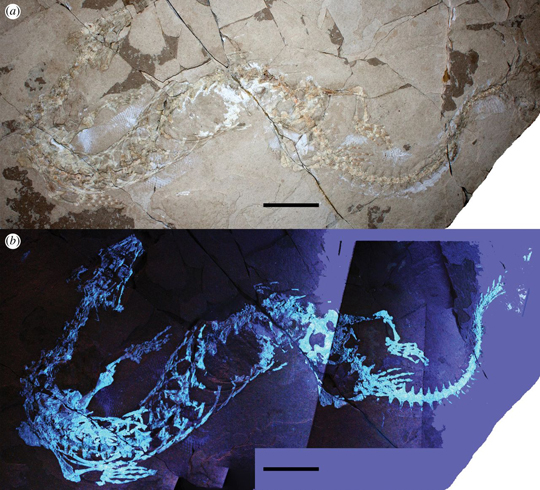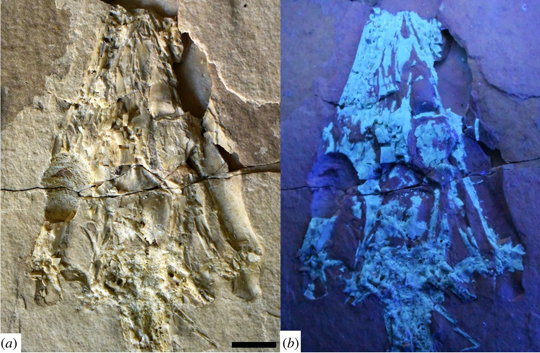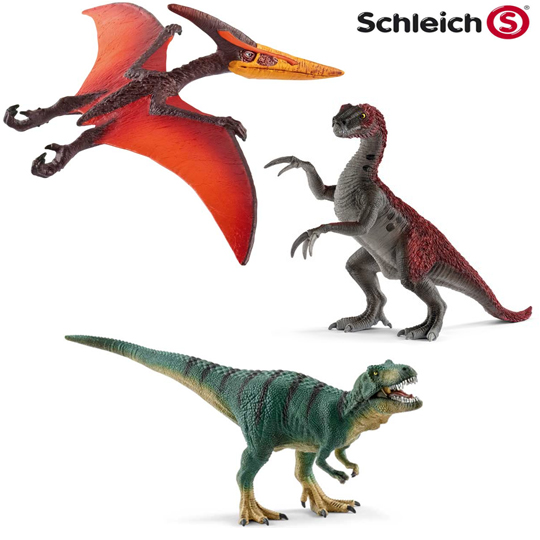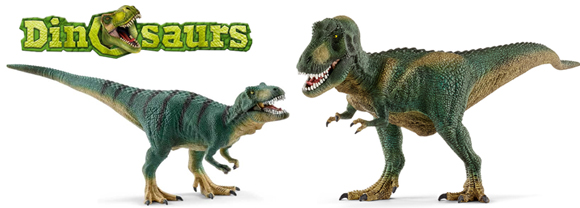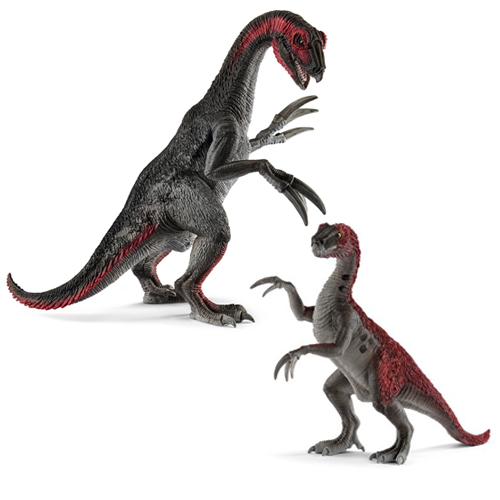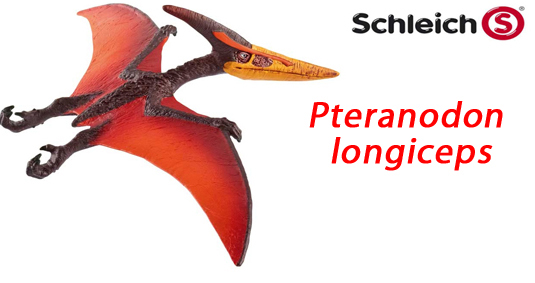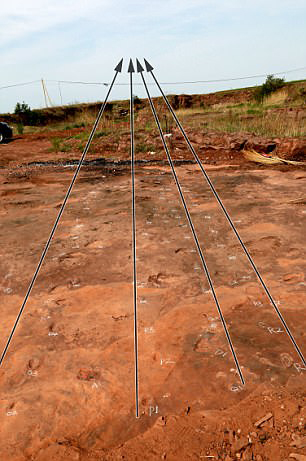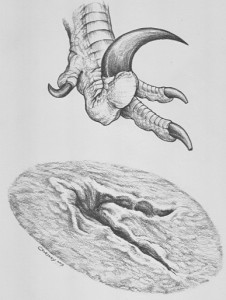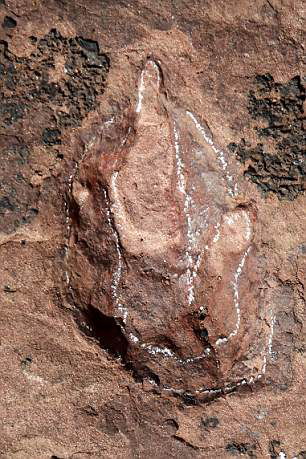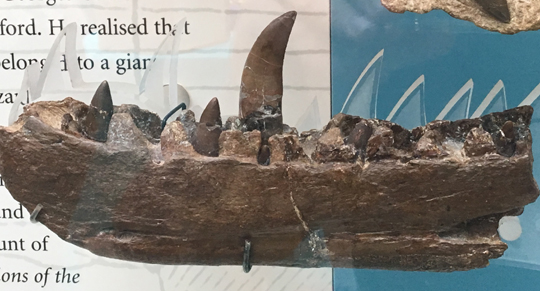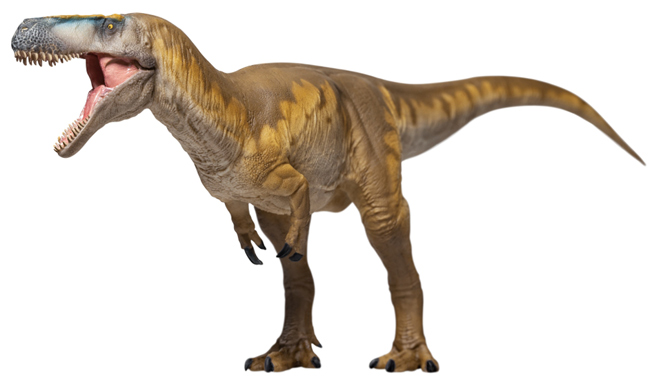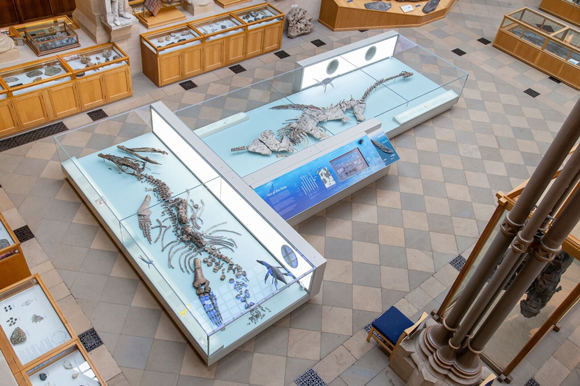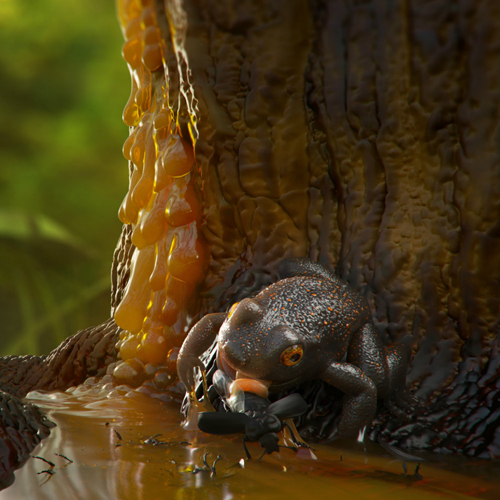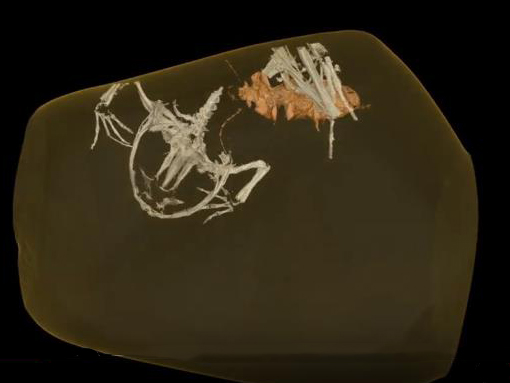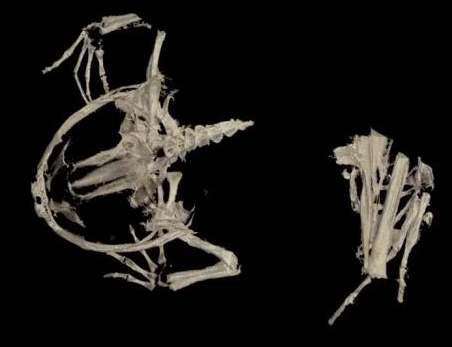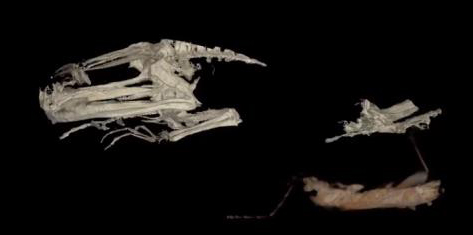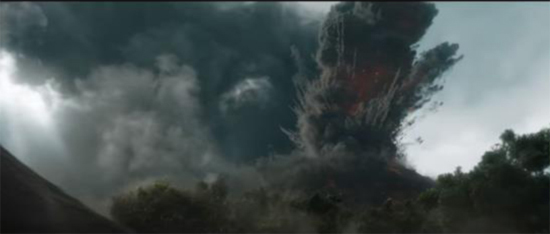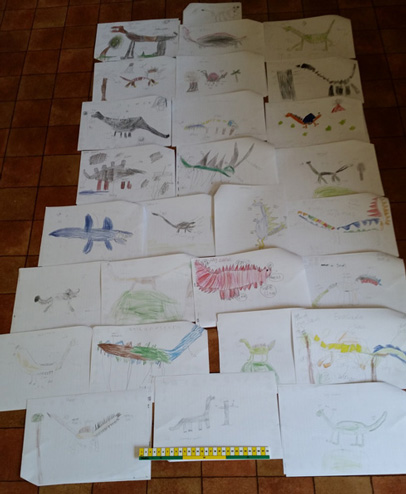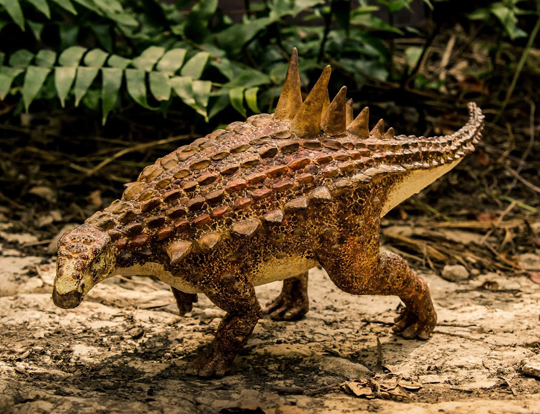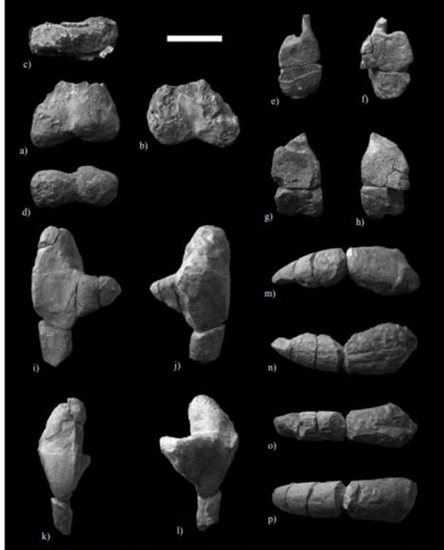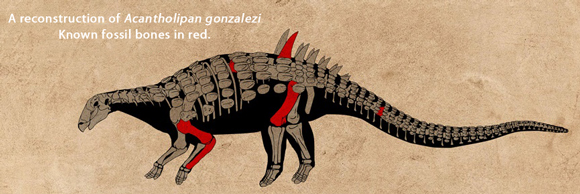Researchers Identify New Species of Ancient Marine Lizard
Primitivus manduriensis – New Semi-Aquatic Lizard Honours Red Wine Grape
The discovery of an articulated fossilised skeleton with exceptional soft tissue preservation indicates that the enigmatic dolichosaurs were around at least fifteen million years later than previously thought. A newly described ancient marine lizard is helping to re-write Earth’s history.
Ancient Marine Lizard
Researchers, including scientists from the University of Alberta (Canada), have described a new species of dolichosaur, naming it Primitivus manduriensis. The fossil specimen was found near Nardò (Lecce, Puglia), a small town located in the Salento Peninsula (southern Italy). The animal was probably semi-aquatic, hunting for small fish in shallow waters whilst also venturing out onto land from time to time. The specimen, although crushed flat, is so well-preserved that muscle, skin and scales can be observed under ultra violet light. Even the small bones of its fish prey have been preserved in the gut.
The reptile, which was approximately one metre in length has been named after the local Manduria variety of red wine grape primitivo.
A Life Reconstruction of Primitivus manduriensis
Picture credit: Fabio Manucci
Found in Rocks Dating from the Late Campanian to the Early Maastrichtian
The fossil was discovered in what was once a shallow water environment, perhaps an embayment. After it died, this member of the Squamata (it was related to lizards, snakes and mosasaurs), sank to the bottom and was covered in sediment, safe from any currents that would otherwise have scattered its remains and away from scavengers.
Lead author of the paper, published in Royal Society Open Science, University of Alberta student Ilaria Paparella commented:
“The marine lizards are essentially small, long-bodied animals that look like regular lizards with longer necks and tails. They have paddle-like hands and feet for swimming but could also move on land.”
Dorsal View of the Holotype Primitivus manduriensis Fossil Material
Picture credit: Royal Society Open Science
Primitivus manduriensis (An Ancient Marine Lizard)
The photographs (above), show the holotype of Primitivus manduriensis (MPUR NS 161) in natural (a) and UV light (b) as exposed from the matrix in dorsal view. The imaging under UV radiations is a composite of two pictures, finalised with Adobe Photoshop CC 17 (2013 release). Note scale bars equal 5 centimetres.
At around 70 million years old, this specimen is significantly younger than other existing specimens from the dolichosaur group, extending the temporal range of their existence by about fifteen million years. The fossil also represents the first evidence of the presence of dolichosaurs in the southern Italian Carbonate Platform, filling a palaeogeographic gap in the Mediterranean Tethys.
Soft Tissue Preservation
For PhD student Paparella, one of the most fascinating things about the specimen was the ability to study the soft tissues, including scales, muscle and skin. The Department of Biological Sciences student conducted the research as part of her PhD with University of Alberta palaeontologist Michael Caldwell, helping to write the paper.
Ilaria explained:
“There need to be very special conditions for soft tissue to be preserved on a fossil. The location where the Primitivus manduriensis was found has a great deal of potential. We hope to get permits from the Italian authorities to conduct further fieldwork.”
“This was the first time I’ve ever had the opportunity to look at the complete picture of a beautifully preserved specimen, right down to the scales. For living species, scientists use scale patterns and skin for identification. It was unique to be using these techniques to look at a specimen that died 70 million years ago.
When the area of the gut was studied, the researchers identified several tiny, rod-like fragments of bones visible under ultra violet light. Although their identity could not be clearly assessed, this evidence suggests that Primitivus was feeding on small vertebrates (e.g. fish).
A View of the Crushed Skull of the Holotype (P. manduriensis)
Picture credit: Royal Society Open Science
The two photographs (above), show imaging of the skull of Primitivus manduriensis MPUR NS 161 under (a) natural light and (b) UV light. The skull of the holotype is heavily crushed (a) and part of the elements are only preserved as impressions on the matrix, as observed under UV light (b), where the bone material still preserved is bright white. Note scale bar equals 1 cm.
The new specimen may represent local persistence of a relict dolichosaur population until almost the end of the Cretaceous in the Mediterranean Tethys, and demonstrates the incompleteness of our knowledge of Dolichosaur temporal and spatial distributions
The scientific paper: “A New Fossil Marine Lizard With Soft Tissues From the Late Cretaceous of Southern Italy” by Ilaria Paparella, Alessandro Palci, Umberto Nicosia, Michael W. Caldwell and published in Royal Society Open Science.
Visit the Everything Dinosaur website: Everything Dinosaur.


